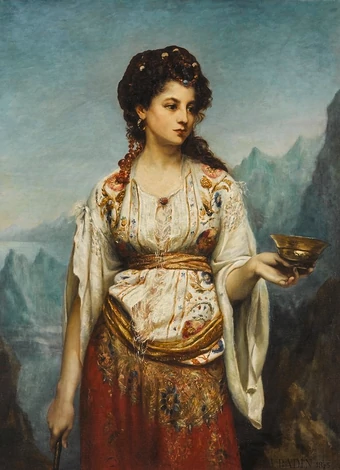Time To End “The Odyssey’s” Journey into the Classroom

by Lizzy Hermosilla 23’
Madeline Miller’s “Circe” is a page-turning novel that is a great example of a contemporary work that should take the place of worn-out “classics” that overwhelm high school curriculums across the country. Trudging through Grecian epics like “The Odyssey” is an absolute chore for many students, even the ones who enjoy reading. Not only is “The Odyssey” painfully confusing to understand without the aid of an audiobook, or a teacher, but there are amazing adaptations of the original text, like “Circe,” that should be taught in schools.
First published in 2018, the novel is a truly spellbinding re-work of the mystical story of “The Odyssey.” Miller incorporates countless genres into this adaptation, from romance to action to coming-of-age. Miller encapsulates all the qualities of a truly fantastic romance novel with a slow-burning flame of Circe’s possible next suitor that burns until the very last page. The readers see Circe first discover her witchcraft as she turns a mortal into a god in an attempt to be with him. Then a tragic heartbreak happens only pages into the book, making not only Circe’s blood boil but the readers too. Love then becomes jealousy as Circe creates one of the most deadly monsters of Greek literature, thus revealing her powers to both the Titans and the Olympians, who fear a Titan rebellion. Once she is exiled to the mythological island of Aiaia, she develops relationships with many more men that will leave the reader swooning. The possibilities of a passionate romance with messenger god, Hermes, or a forbidden love with prisoner of Crete, Daedalus will definitely leave the reader wanting more.
If romance was the only attribute of this novel to be noted, then it would be understandable for schools to stick with the “classics” and continue teaching “The Odyssey,” but that is simply not the case. Miller develops a romance using all the same elements of “The Odyssey.” In “Circe,” it is impossible to miss the tantalizing imagery that would make anyone want to visit Aiaia, or the epithets that perfectly sum up the characters in a few short words. The plot of this novel could thrive on Circe’s romantic entanglements all on its own, but they are a mere subplot to go alongside this page-turning story filled with action and magic. With every turn of the page, the reader can discover, alongside Circe, her enchanting witchcraft, and the new perils that she faces. “Circe” includes many of the same themes of “The Odyssey,” such as the tension between free will and fate. “Circe” also includes some unique themes that reflect a book written in the 21st Century rather than in the 9th Century BCE; for example, feminism as well as the importance of mortality and feeling pain.
To say Madeline Miller’s “Circe” was enchanting is an understatement. The novel not only reinvigorates an overlooked character in “The Odyssey,” but it is a story that highlights women’s empowerment. Schools should be fighting to have it become a part of their curriculum because it will make reading books for school more interesting, especially because of Millers’ ability to straddle more than just one genre. High schoolers constantly read books written by men, but there is really no benefit to reading the tired “Odyssey” over “Circe,” so why give a dead man more time in the spotlight when Madeline Miller is alive today.
Grade: A